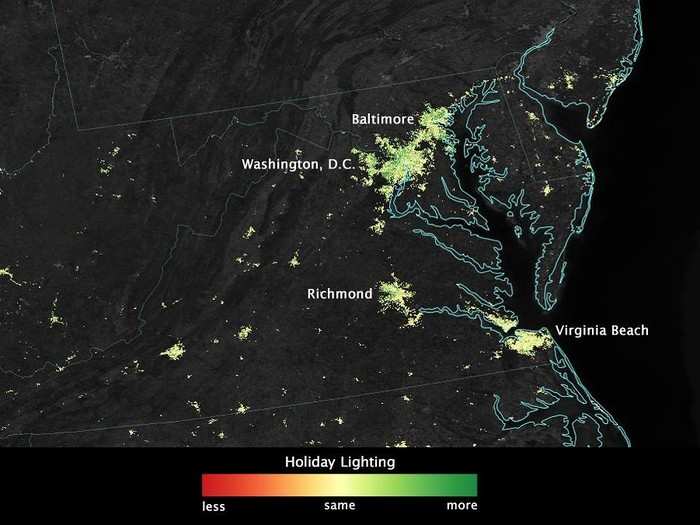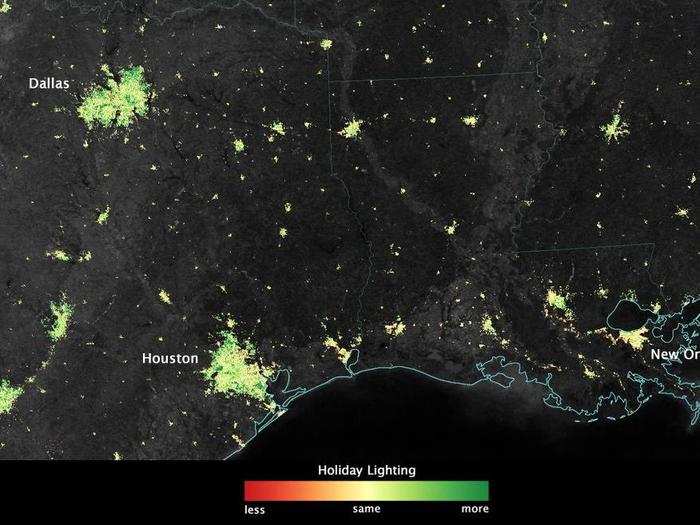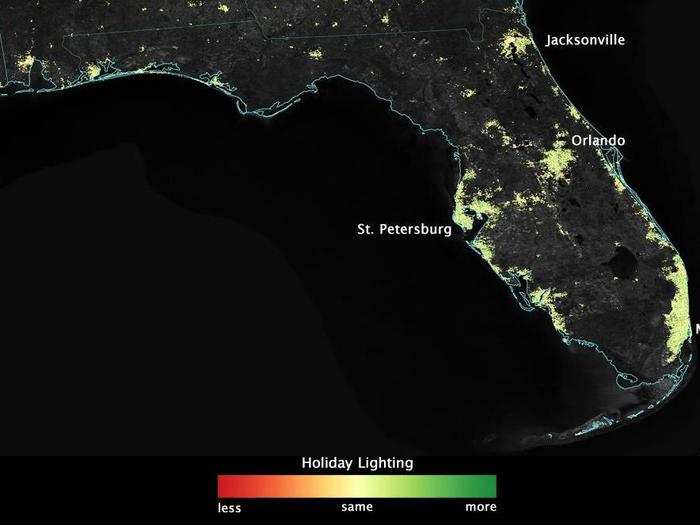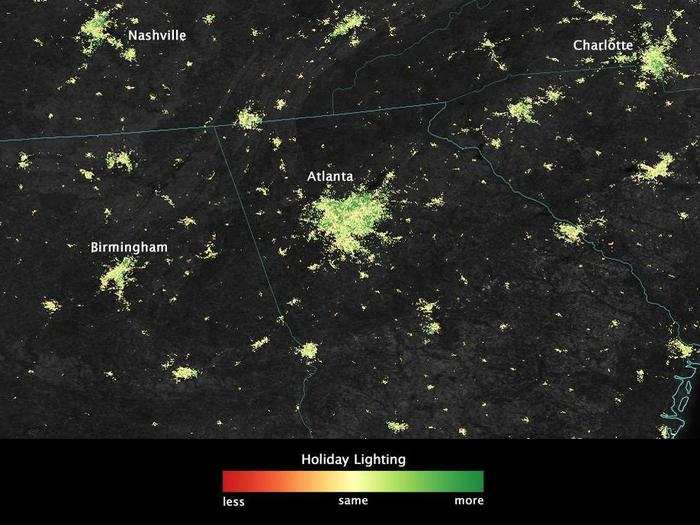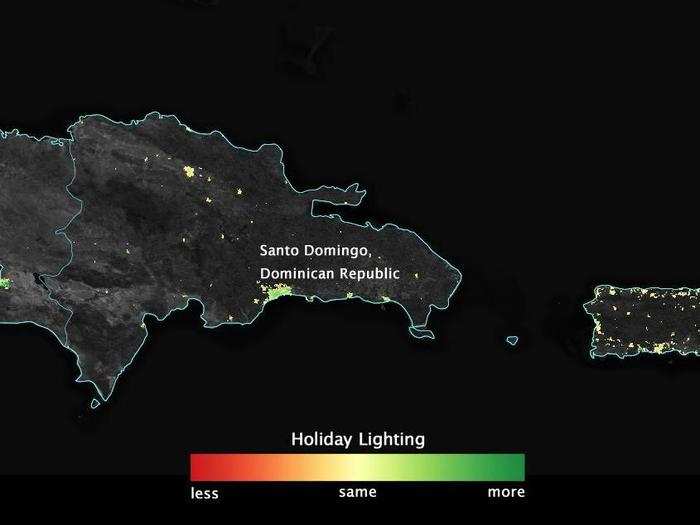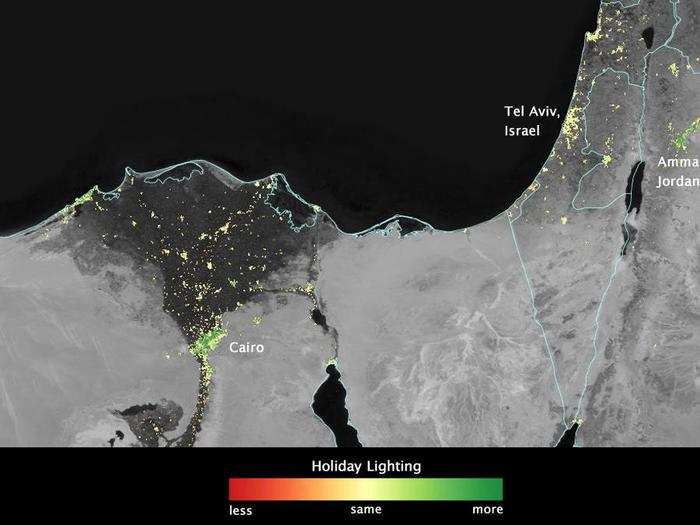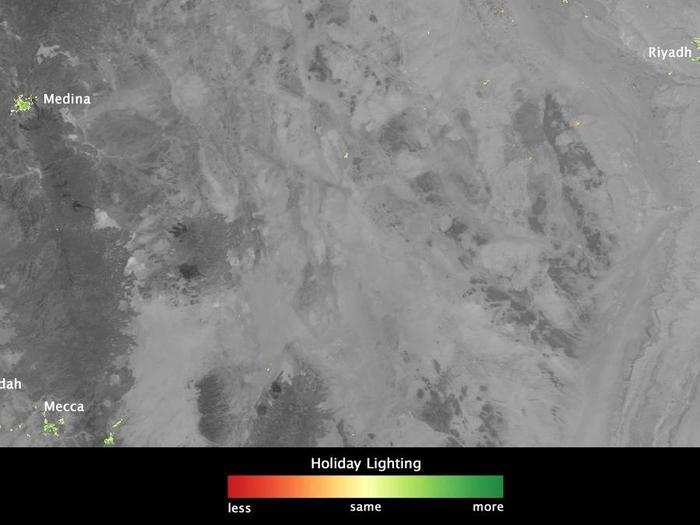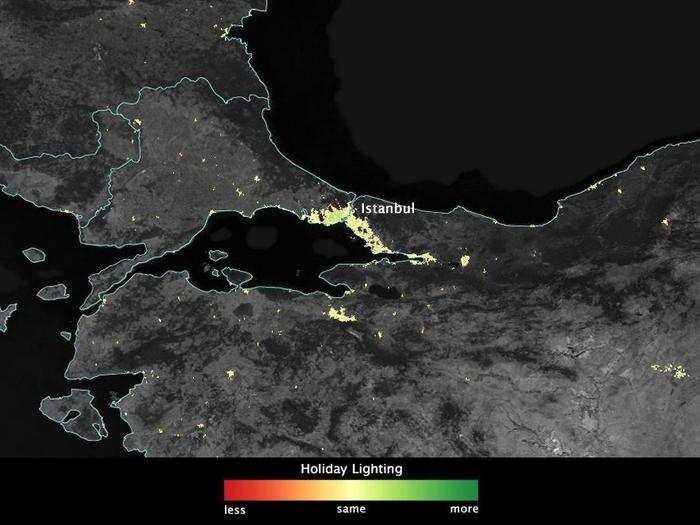After examining 70 US cities, NASA found that lighting in central urban areas was 20% to 30% brighter in December.
Washington, DC, was particularly bright compared to Baltimore, Maryland, and Richmond, Virginia.
Christmas lights were even more intense in the suburbs and outskirts of major cities. Those areas grew 30% to 50% brighter in December.
Green patches in Texas indicate that Dallas and Houston had a similar level of Christmas cheer.
In these images, each pixel represents half a mile's worth of light.
Northern California cities like San Francisco and Sacramento were significantly brighter during the holidays.
Holiday festivities also brightened up Los Angeles, San Diego, and Las Vegas, but Phoenix and the Mexican border city of Tijuana saw the biggest holiday light changes.
The images show the average results across December, rather than the light output for a single day.
Even within the same state, some cities were more illuminated than others.
Certain parts of Miami saw no change during the holidays, but Florida cities were a little brighter overall.
The light patterns indicate a "national, shared tradition" across most cities in the US, according to the researchers.
Atlanta also saw a noticeable addition of holiday lights.
Puerto Rico and the Dominican Republic weren't as bright as the mainland US in December, but their capital cities were lit up during the holidays.
Both Puerto Rico's capital, San Juan, and the Dominican Republic's capital, Santo Domingo, grew brighter in December.
The researchers also examined light patterns in the Middle East during the months of Ramadan.
Ramadan is the ninth month of the Islamic calendar, so the dates change every year. From 2012 to 2014, the holiday took place in July and August.
Around that time, the sky was particularly luminous in Cairo, Egypt, and Amman, Jordan. The researchers attribute this to the fact that Muslims celebrating Ramadan fast during the day, so they're more likely to eat, work, and socialize during nighttime hours.
In Saudi Arabian cities, light grew 60% to 100% brighter during Ramadan.
The cities of Riyadh and Jeddah displayed stark patches of green — an indication that they were much brighter than usual.
But Turkish cities weren't as bright. Regions in Syria, Iraq, and Lebanon were also relatively dark.
"Some of the poorest and most devout areas observed Ramadan without significant increases in light use throughout the month, choosing — whether for cultural or financial reasons — to leave their lights off at night," the researchers wrote.
But during the Eid al-Fitr celebration, which signals the end of Ramadan, most Middle Eastern cities were illuminated, according to NASA.
The researchers concluded that holiday activity indeed makes the Earth a bit brighter.

